Champagne Lallier: Getting into the Ground Floor Early
by Ken Gargett
We all hope to find the next hottest thing, when it is just lukewarm, so we can get in on the ground floor. It doesn’t happen often. I can think of two personal examples (well, if we ignore Burgundy because anyone who loved Burgundy a decade or two ago was buying at prices that make us weep today).
The famous Italian Merlot, Masseto, was one. The first time I encountered it was with a bottle of 1993 which was inserted into a blind tasting, next to Petrus, and performed admirably. No one there, amongst a group of very serious winelovers, had ever heard of it.
I raced off and managed to find a magnum of that very wine at a local retailer for just over A$200. Now, that feels a bit like beads for Manhattan. Over the next decade, I’d pick up a bottle or two every year for anywhere between A$120 and $180. Today, the cheapest bottle I can find Downunder is A$1,800, while magnums sit between A$3,000 and A$4,500 each. Just cruel.
The other is a champagne about which I have written (apparently too much as the world now beats a path to the door in the hope of a bottle or two, although I was hardly their only fan), Ulysse Collin.
I was introduced to this grower by an American friend and, as the wines had only just arrived in Australia, for a few years no one else was interested, I was picking it up for around A$65 to A$80 a bottle. Today, it is not quite ten times that price, but headed that way.
No doubt, most winelovers have their own tearjerking story.
Today, the house of Champagne Lallier. I’m not suggesting that the prices here will enjoy the same meteoric rise (always an odd saying, as I was under the assumption that meteors fell, not rose, but no matter), but I do think that this is a house that will become far better known over the next few years. It makes stunning champagne and yet hardly ever appears in the conversation for great bottles. I have no doubt that it will.
————————————————————————————————
————————————————————————————————
My first encounter with Lallier was several years ago when traveling in France. A friend and I went to the brilliant three-star Michelin restaurant, Auberge de I’Ill in Alsace. At least, it was three-star at the time.
In 2019, to the shock of all concerned, after holding those three stars for more than fifty years, it was docked one of them. I have not seen any reason why, and not dined there since this happened, but on the couple of occasions I had previously been there, it was simply superb. But I digress.
At the time, the head sommelier was a gentleman called Serge Dubs and inevitably we had a great chat (by chance, when I returned a few years later, he had retired but occasionally came by to assist and was there on that day – and we had another great chat).
Serge, who looks more like he should be about to start his career than retire, won Best Sommelier in France, in Europe, and in the World, at varying stages over his stellar career. The bloke knows what he is talking about. But we have digressed again.
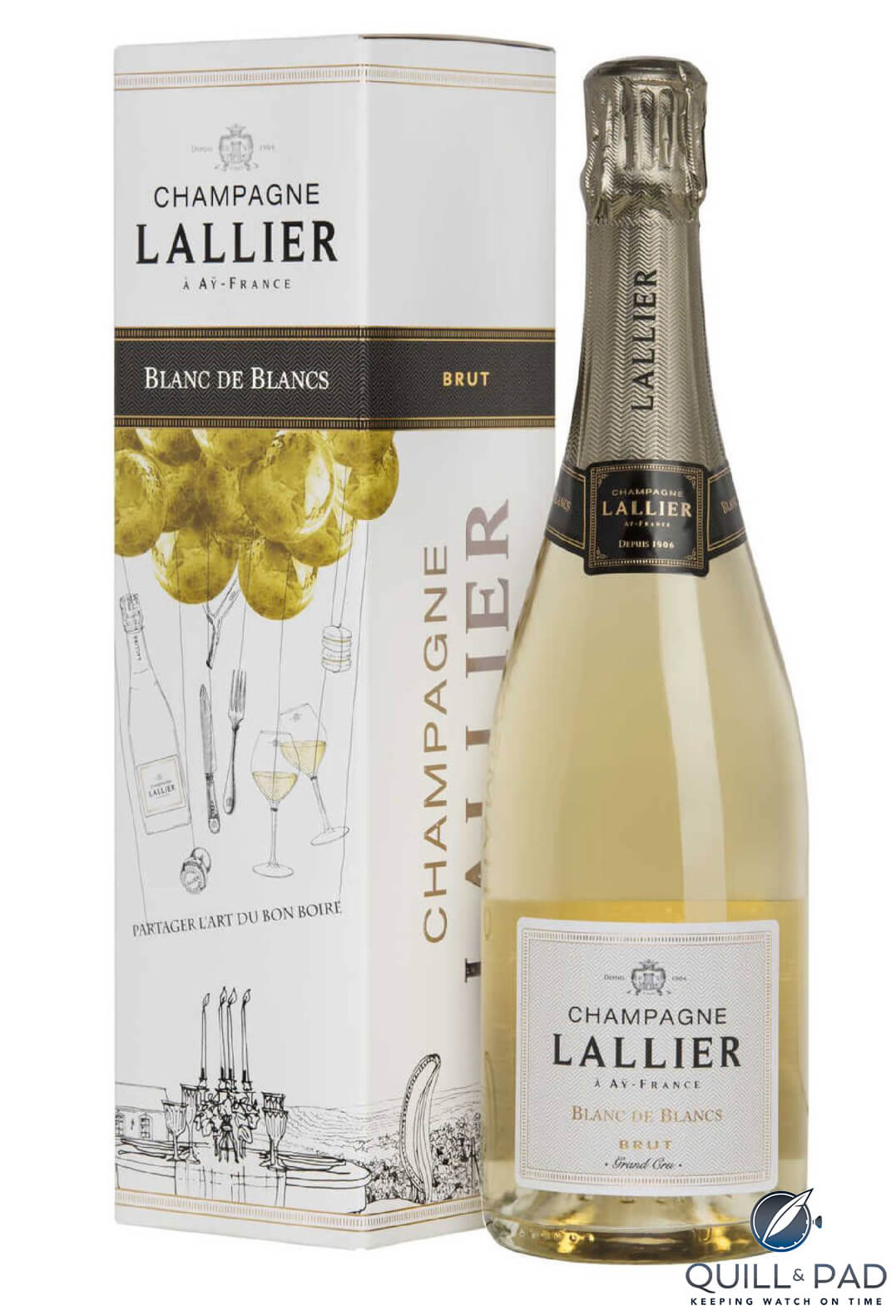
Champagne Lallier Blanc de Blancs magnum
Serge, after a discussion, recommended a bottle of Lallier, their Blanc des Blancs. What was fascinating about this wine was that, rather than coming solely from the famed Cotes des Blancs, a good percentage hailed from the Ay region, far better known for its Pinot Noir than Chardonnay.
Neither of us had heard of Lallier at the time, but we loved the wine and I never forgot it, always taking the opportunity of trying other wines from Lallier on the rare occasions the opportunity presented itself.
When a bottle of the 2014 arrived for consideration, I could hardly have been happier. To learn more, I headed off to all my old champagne tomes for an insight, but soon realized that this is a house that most have ignored – even the classic champagne authors.
Old classics by Tom Stevenson, Patrick Forbes and Andre Simon made no mention. However, they did occasionally mention a gentleman named Lallier, but the connection was with the famous house of Deutz. Turns out for good reason.
————————————————————————————————
————————————————————————————————
What of today’s experts? Again, no mention from Michael Edwards, Charles Curtis and Peter Liem. Finally, Richard Juhlin in his ‘Champagne Magnum Opus’, gives it a brief nod. A few lines, noting the connection with Deutz, but certainly not getting excited by the wines.
Only my good friend and fellow Queenslander, Tyson Stelzer in his ‘Champagne Guide Edition VI’, gives it anything like the coverage it deserves, although he talks of it being established in 1996. The house itself claims it was established back in 1906, but I suspect it is how one defines a house and its establishment. As Tyson refers to its youth, fair to assume not a typo.
Rene Lallier married into the Deutz family in 1906, and he and his descendants managed that house until it was sold to Louis Roederer in 1996. The team at Lallier note that their eponymous house continued from that time. Amongst plenty of other information, they note that James Lallier looked after the place from 1973 to 1993, and it was during his time that they introduced their Blanc des Blancs. So obviously the house was in operation. It just seems that hardly anyone noticed.
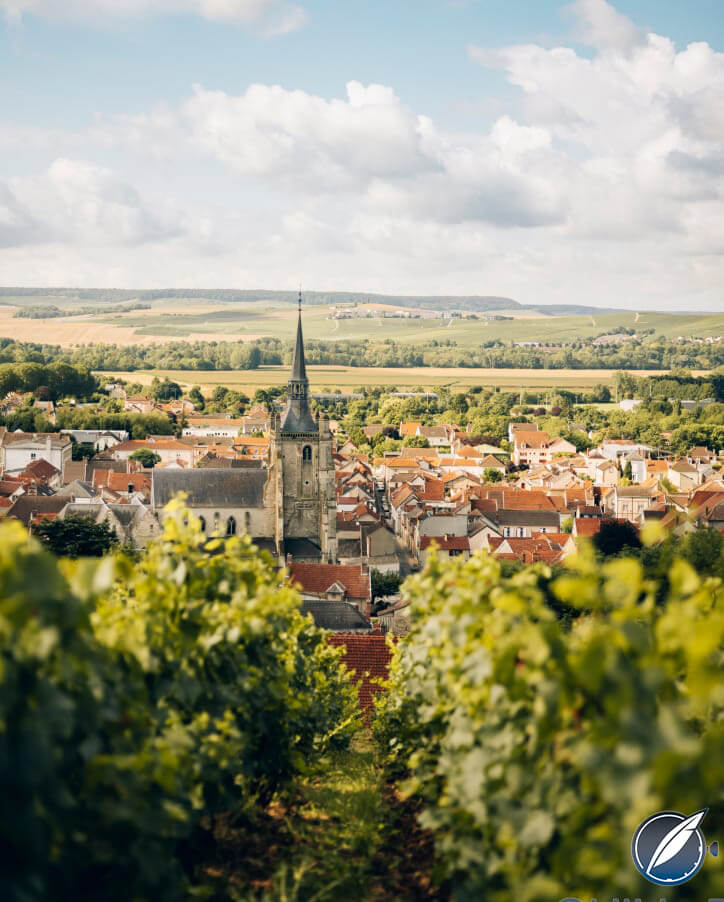
Village of Aÿ in the champagne region of France
All through this time, the family remained based in the village of Ay, a famous grand cru village and home to names like Bollinger.
Perhaps this is no surprise as this is also the home of the house of Deutz.
————————————————————————————————
————————————————————————————————
In 2004, the family sold to Francis Tribaut, who decided to keep the Lallier name. Tribaut built a modern new winery in 2012 and has introduced several new cuvees. In 2020, he sold to Campari. It was Campari’s first venture into the wines of Champagne.
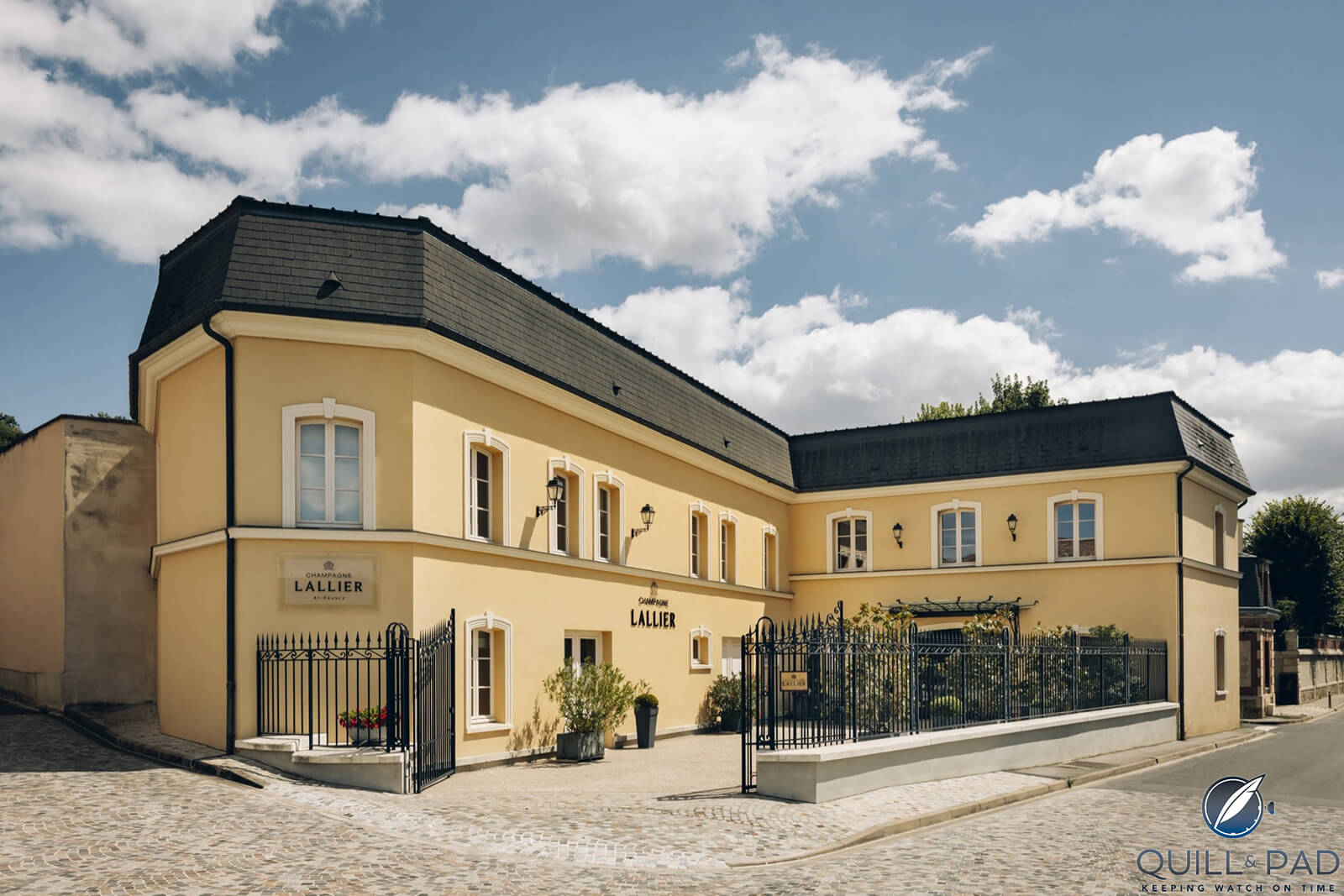
Champagne Lallier
It did not take Campari long to make a massive splash in the region, suggesting that this was far from a vanity purchase. Over the last decade, there has been a seemingly never-ending game of musical chairs and winemakers’ two-step in the region with chefs de cave moving from house to house. Sometimes, it has been hard to keep track.
Many champagne lovers will have been familiar with, and likely even met with, Dominique Demarville from his time as one of the region’s youngest chefs de cave while at the huge house of Veuve Clicquot. Demarville is an exceptional winemaker and a most thoughtful one.
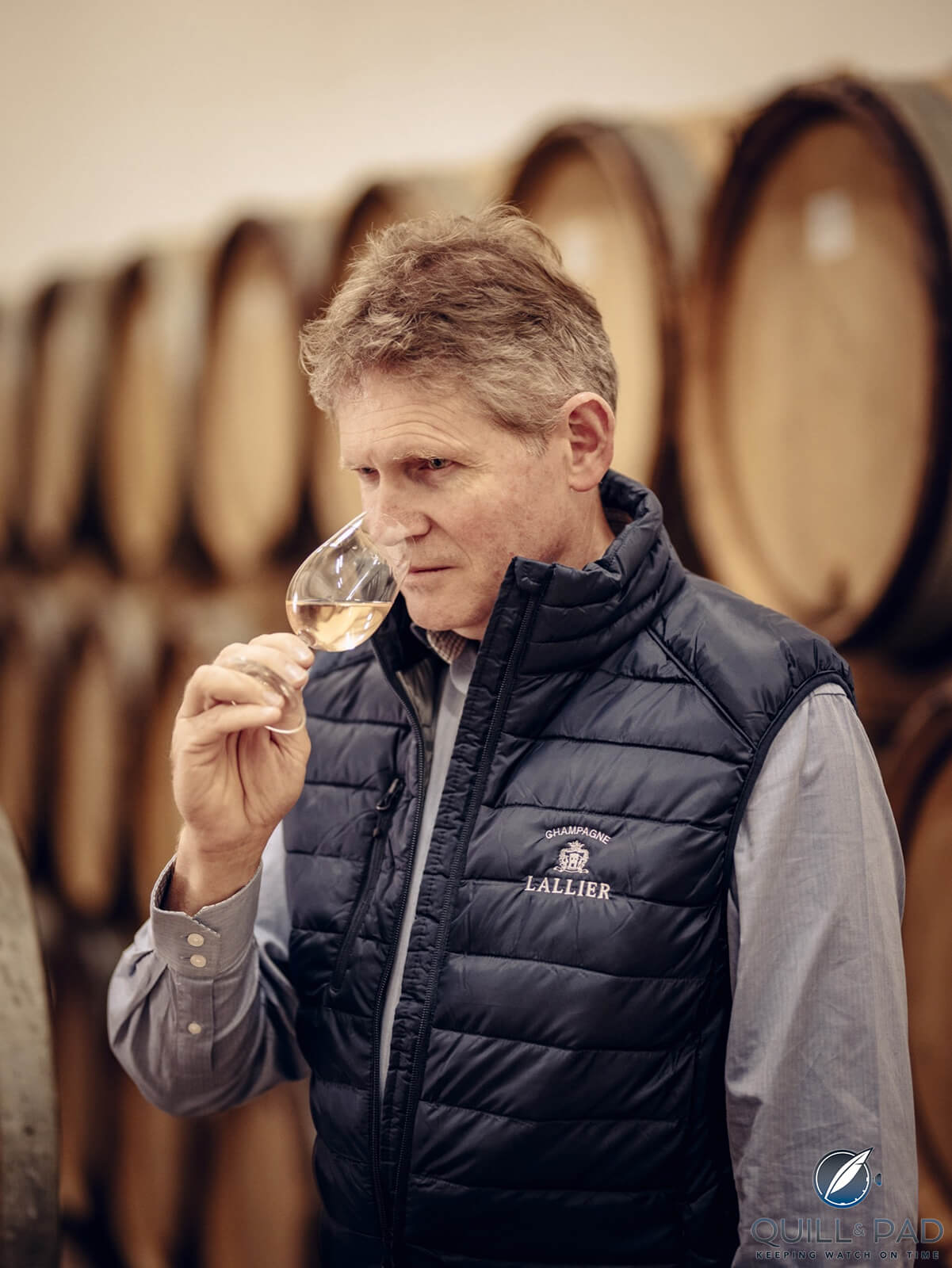
Dominique Demarville, chef de cave at Champagne Lallier
Chatting with Demarville is always a fascinating experience. He is also, like many winemakers around the world, a keen fly-fisherman. Campari stunned the industry when they appointed Demarville as chef de cave and GM in 2021, although it was all very roundabout.
Demarville, after time at Mumm when he was appointed as chef de cave in 1998 at the extraordinarily young age of 31 – as far as is known, the youngest ever chef de cave of a major house – joined Veuve Clicquot in 2006 and was just the tenth chef de cave in the history of that house.
Synchronicity put its best foot forward and Demarville’s offsider at Mumm, Didier Mariotti, followed in his footsteps by taking the position of chef de cave at Mumm, and then later, chef de cave at Veuve Clicquot (fair to say that the efforts of these two winemakers performed magic at Mumm, lifted this once great house out of the doldrums in which it had slid).
————————————————————————————————
————————————————————————————————
In late 2019, Demarville left to join Laurent-Perrier, a move that also shocked many. Within a year, he had announced he was leaving Laurent-Perrier, another staggering move as such a short tenure is extremely rare in the region.
Just why things did not work out at Laurent-Perrier has never been discussed by either side, to my knowledge, and if there is any resentment on either side, that also has not been made public.
There was endless speculation as to where he might land next, with Bollinger a hot favorite at one stage. As it happened, Demarville was headed for Ay but to a different house, that of Lallier.
Put simply, Campari had snared one of Champagne’s great talents as their new chef de cave. Of course, it will take time for Demarville to make the impact that he surely will, but the early signs are so exciting. Francis Thibaut is still working with the house.
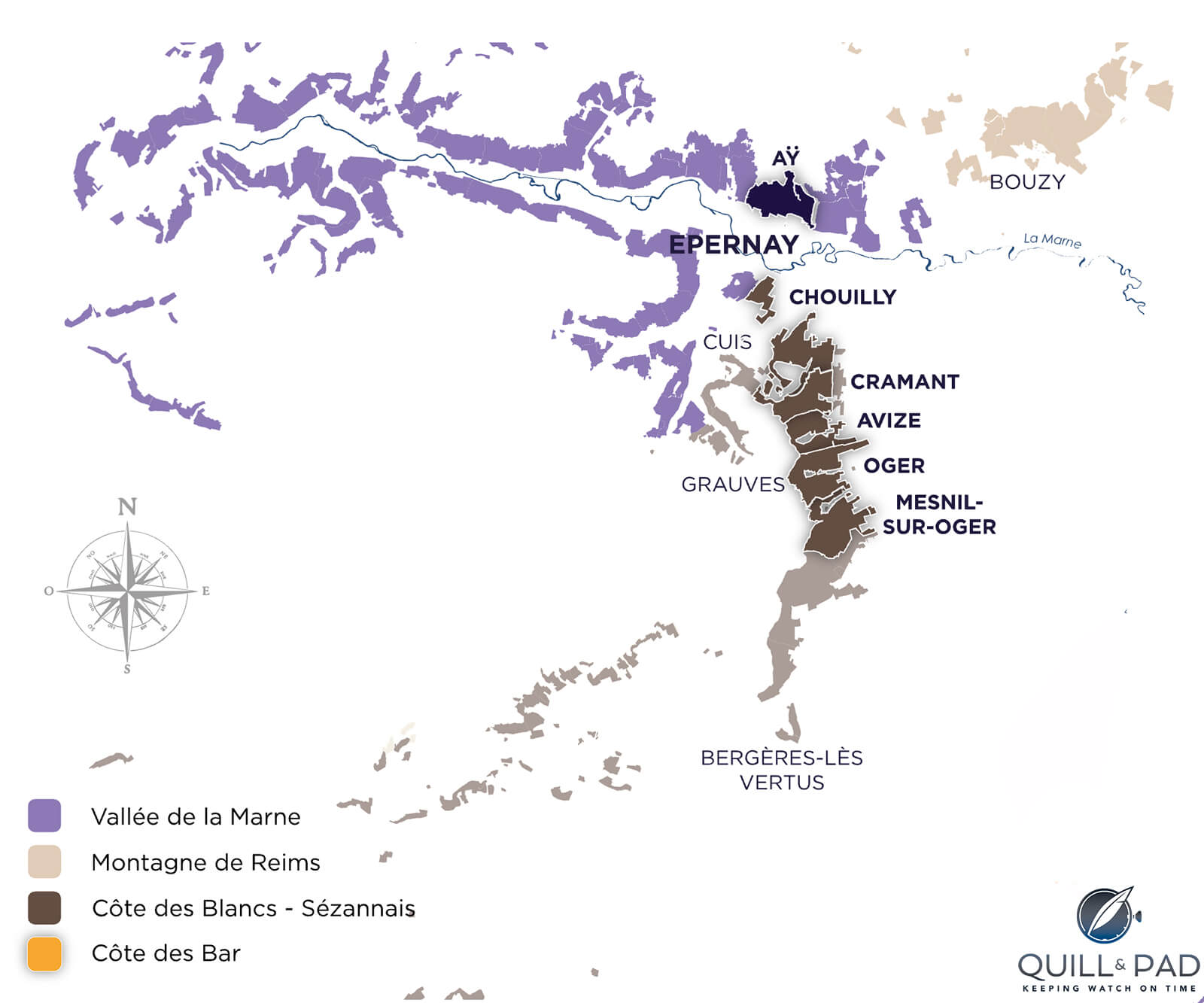
Champagne Lallier region
Demarville has talked of why he joined Lallier. He was impressed by the balance of the wines, based on what he calls the four pillars of purity attained from the chalk of the region – freshness from the climate, intensity, depth from the blending and the aging. He has continued the work the house began on yeasts, finding it crucial to improving the wines.
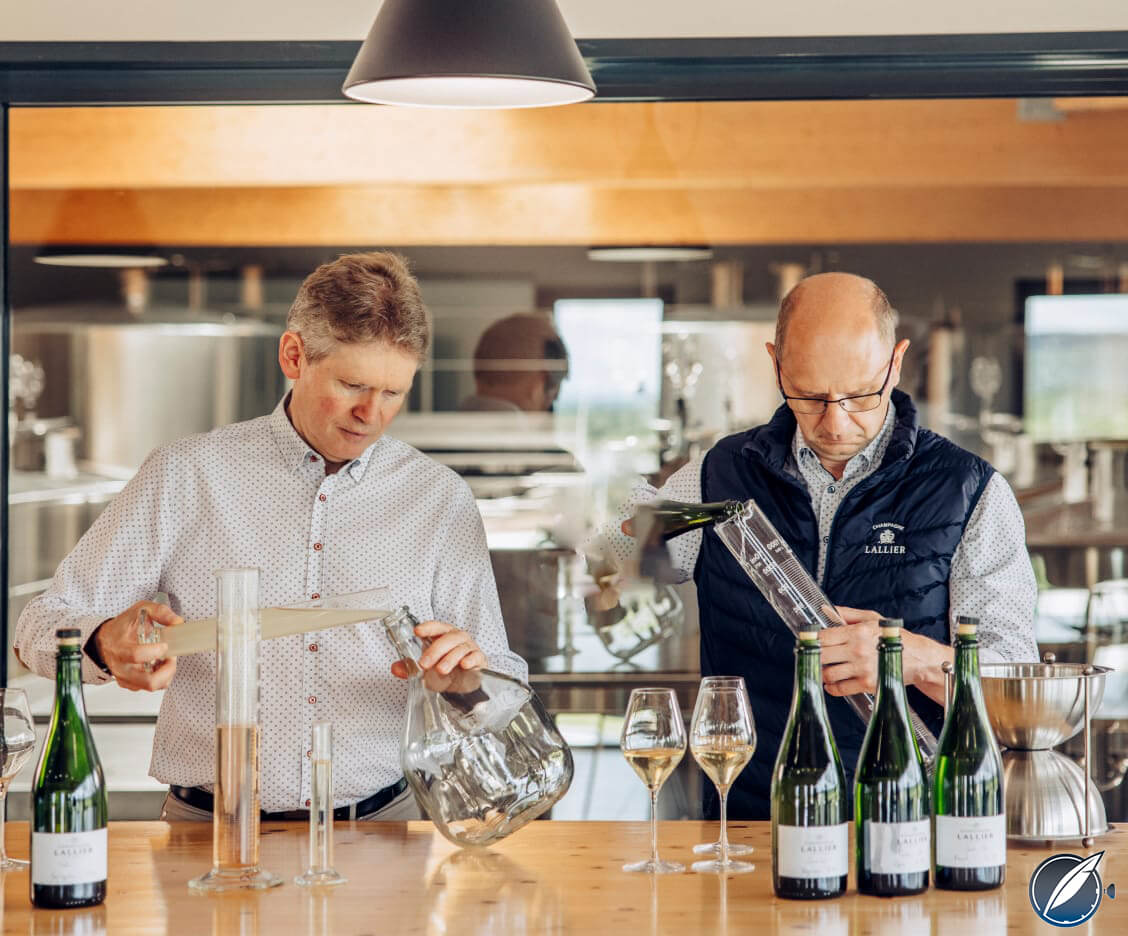
Champagne Lallier
He is excited about the terroir of his vineyards and mentioned the impact of Chardonnay from Ay. Oak from the Champagne region has also been employed. Advances are also being made in the vineyards.
————————————————————————————————
————————————————————————————————
Lallier now has 15 hectares of vineyards (or fifty, depending on your source – production figures vary just as much, but 15 seems to be quoted more often so I am happy to go with that). That said, it seems that production has hit one million bottles, although interestingly the house notes that 700,000 of those were Lallier, so obviously they are making other champagnes.
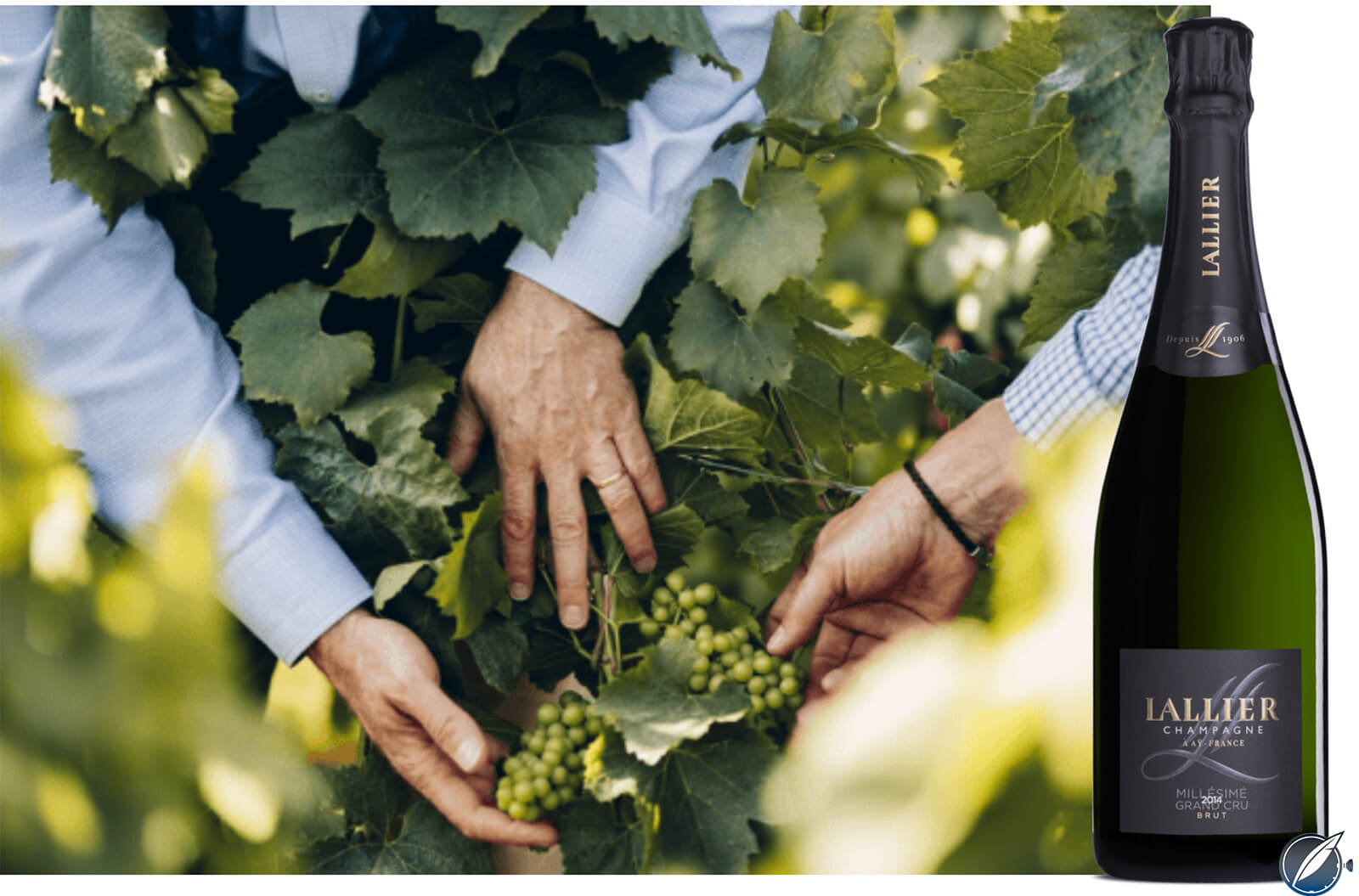
Champagne Lallier 2014
The current vintage release from Lallier is from 2014, which the house describes as an “outstanding vintage”. Houses, as is the tendency of winemakers the globe over, can sometimes expand on the qualities of a vintage, giving them a ranking that may not be fully deserved.
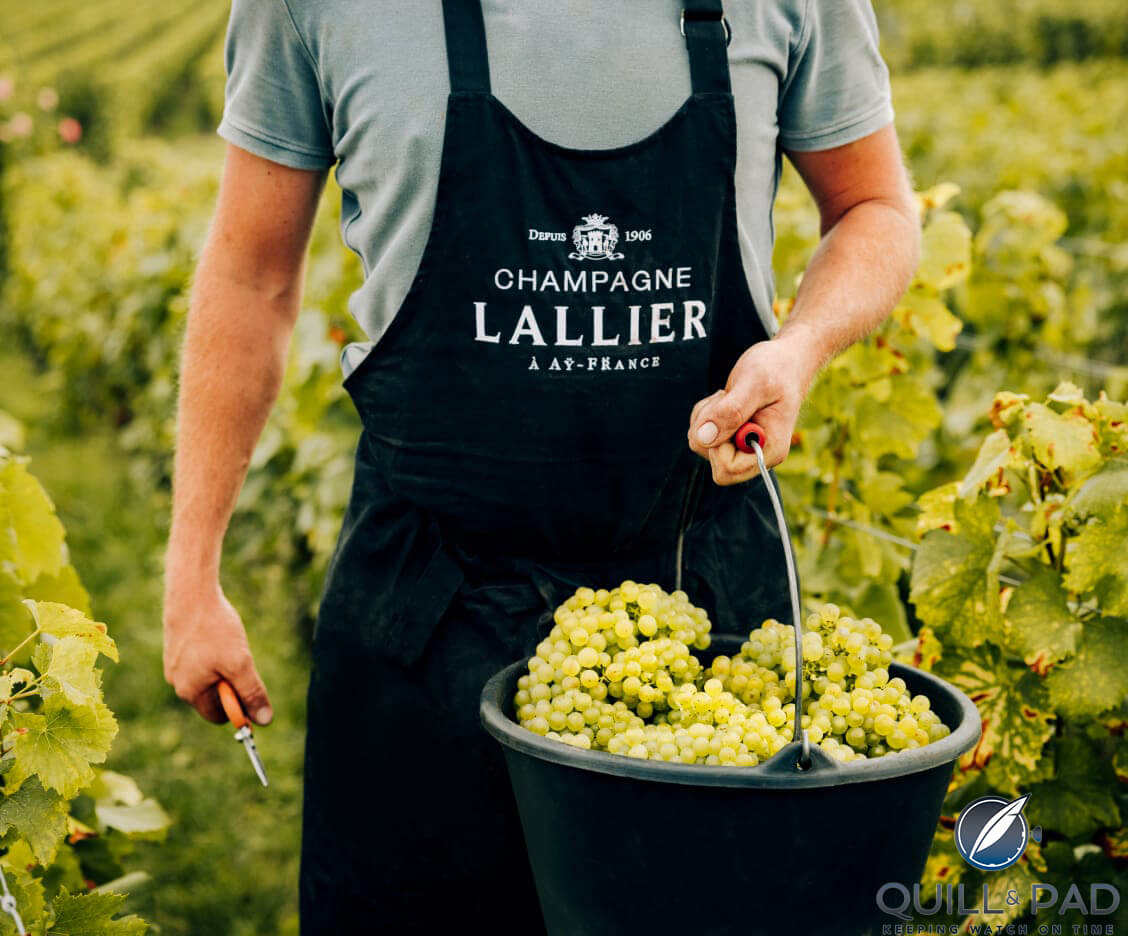
Champagne Lallier grape picking
So, when I saw them referring to the 2003 vintage, one which for me has very few redeeming features, as an “exceptional vintage”, I’m taking whatever they say with the proverbial grain of salt.
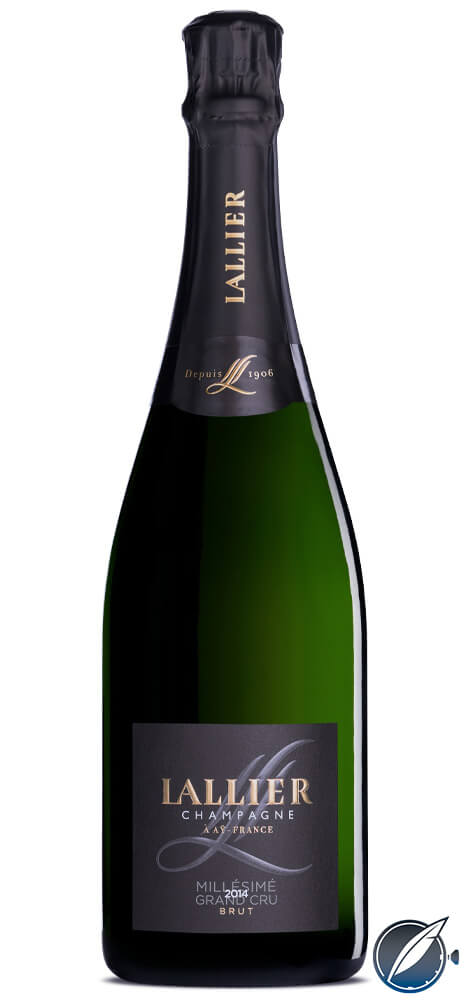
Champagne Lallier 2014
So how is 2014? Our usual source for these matters, Charles Curtis MW in his “Vintage Champagne: 1899 to 2019”, ranks it three stars (out of five) and noted that it was “an up-and-down year that ended well”. Fears of botrytis infection largely proved unfounded, with Chardonnay faring best of the trio of varieties.
A warm, dry September helped save the year. Curtis’s view is very much in line with the general reports. It may not quite reach the quality of 2008, 2012 or the 2018-2020 trio, but it is a very good year.
The Lallier 2014 is a blend of 73% Pinot Noir and 27% Chardonnay. Seven years on lees with a dosage of 8 grams/liter. 100% of the wine is sourced from Grand Cru vineyards.
The nose offers toasty notes, walnuts, florals, ginger and truffles. Glacéd lemon. There is great intensity here, but elegance and a gossamer touch are evident. Vibrant acidity, but everything is so well balanced that one almost misses it.
Fresh and pristine, taut and focused, a superb champagne and one which confirms that the 2014 vintage did indeed make some crackers. All this with impeccable chalky backing. Delicious now, but another five to eight years will only add to the complexity. For me, 96-96. Love it.
Take a look at the Lallier range. You might not be getting in right on the ground floor, but awfully close. And you’ll never regret it.
For more information, please visit https://www.champagne-lallier.com/
You might also enjoy:
Billecart-Salmon Nicolas François 2008: Absolutely Sensational Champagne!
Champagne Devaux: Seriously Good Wines
It’s ‘Champagne Day’ with Krug: Pop the Cork and Cheers!

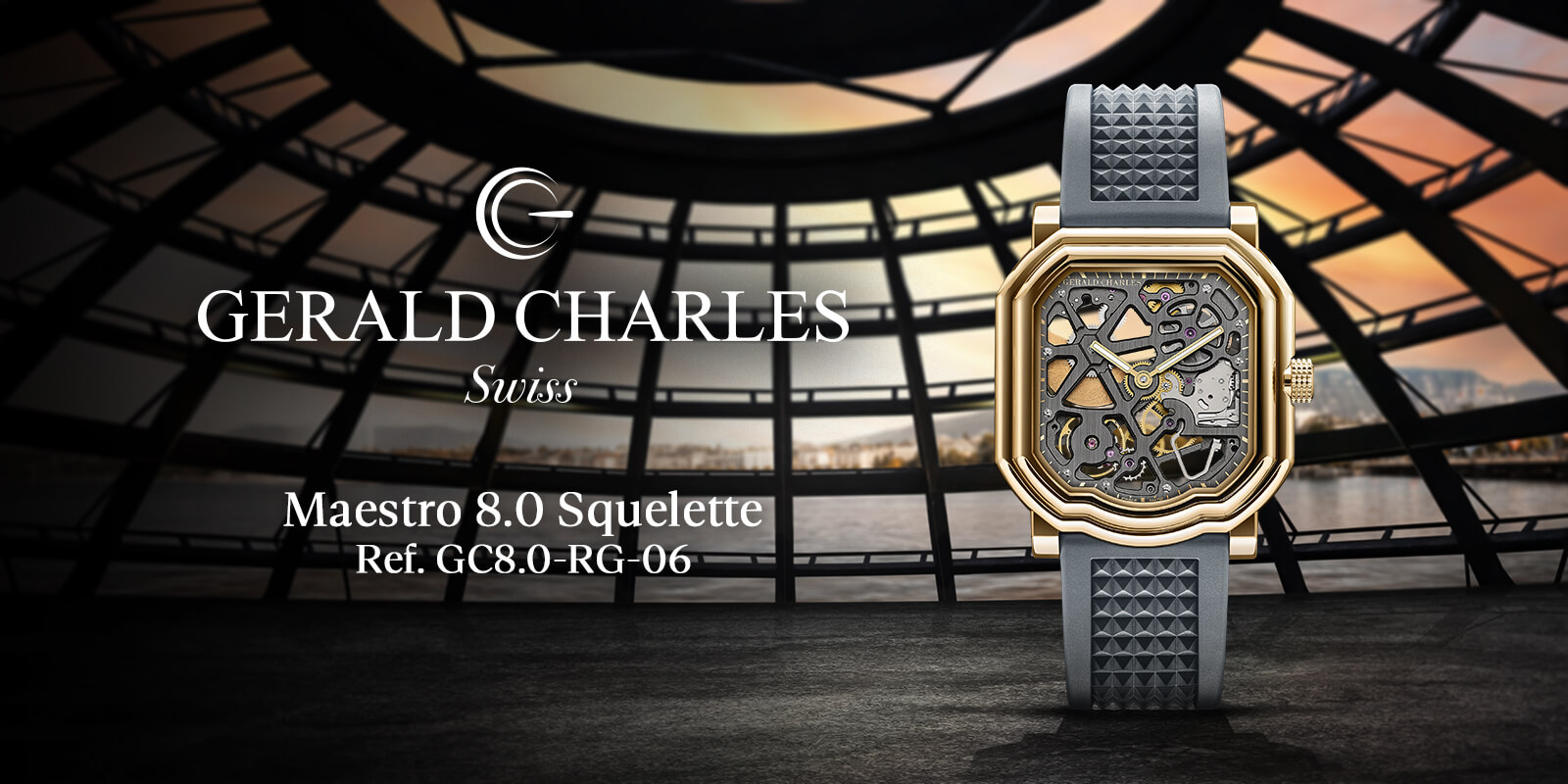
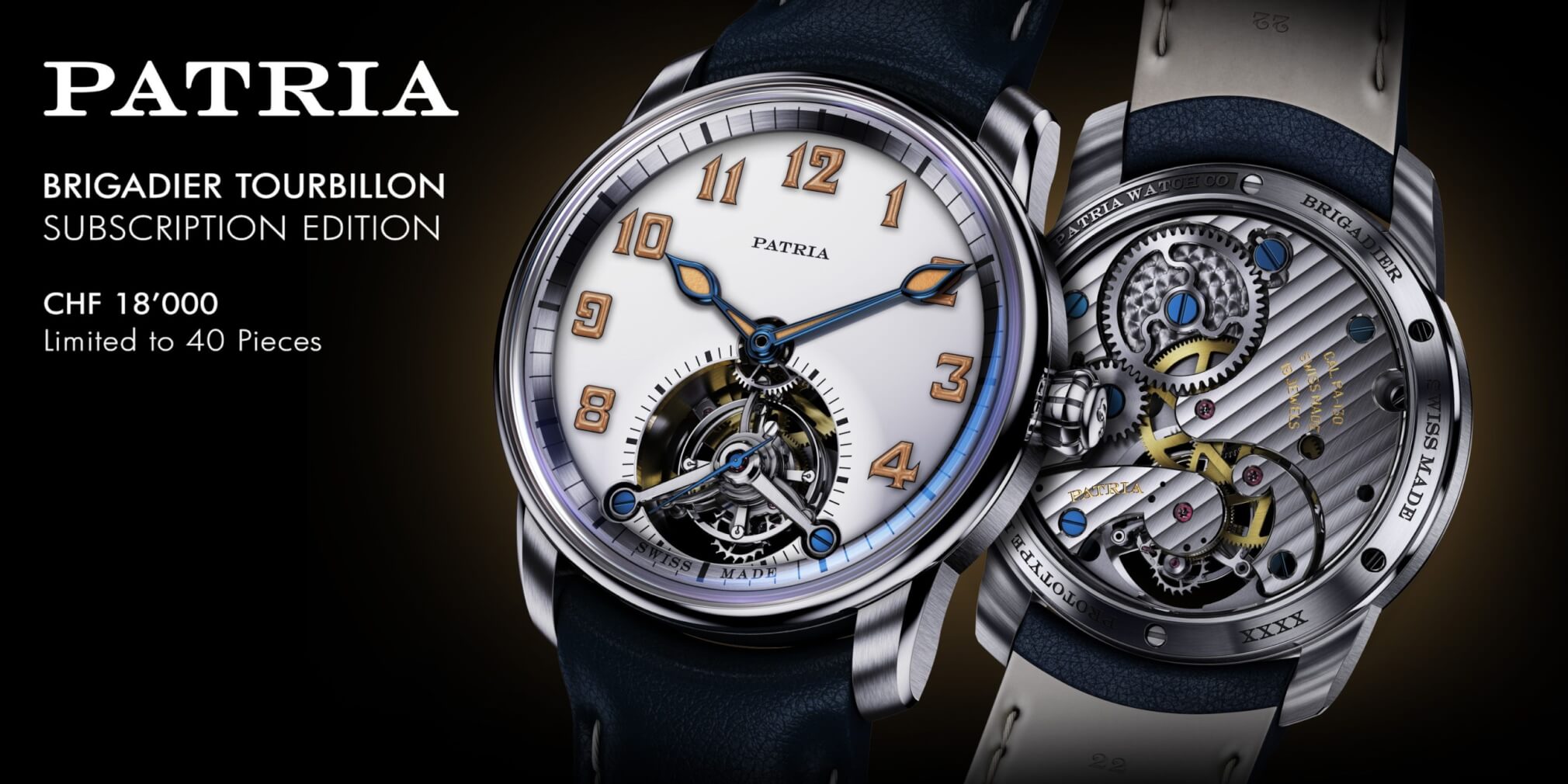
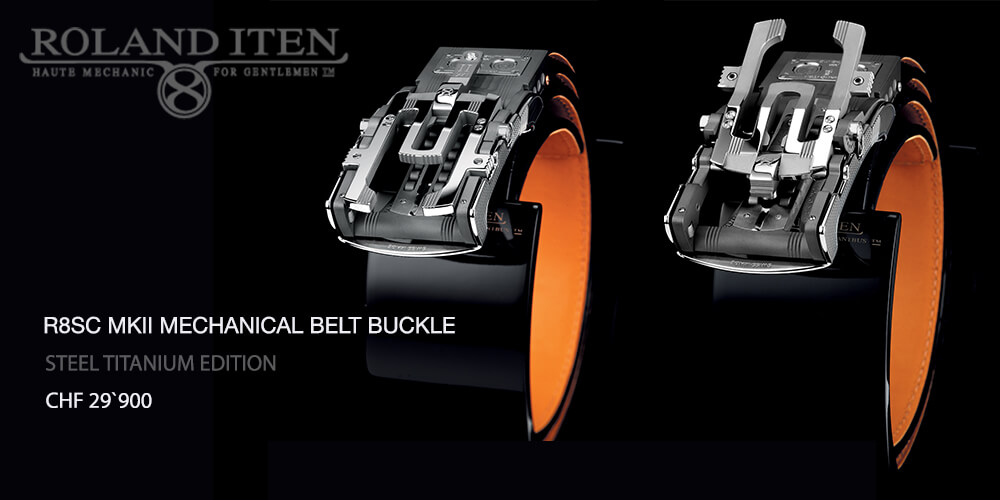
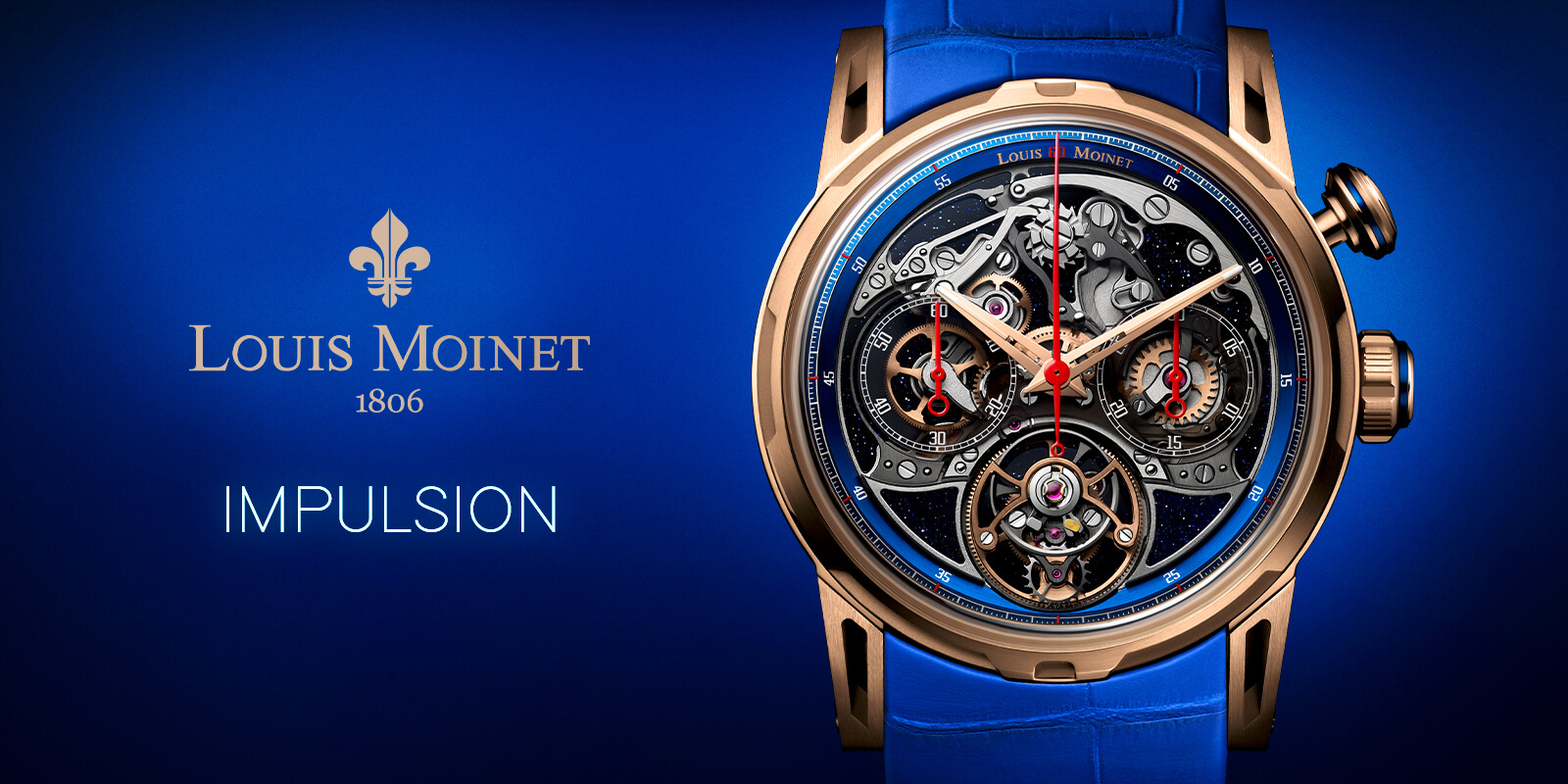
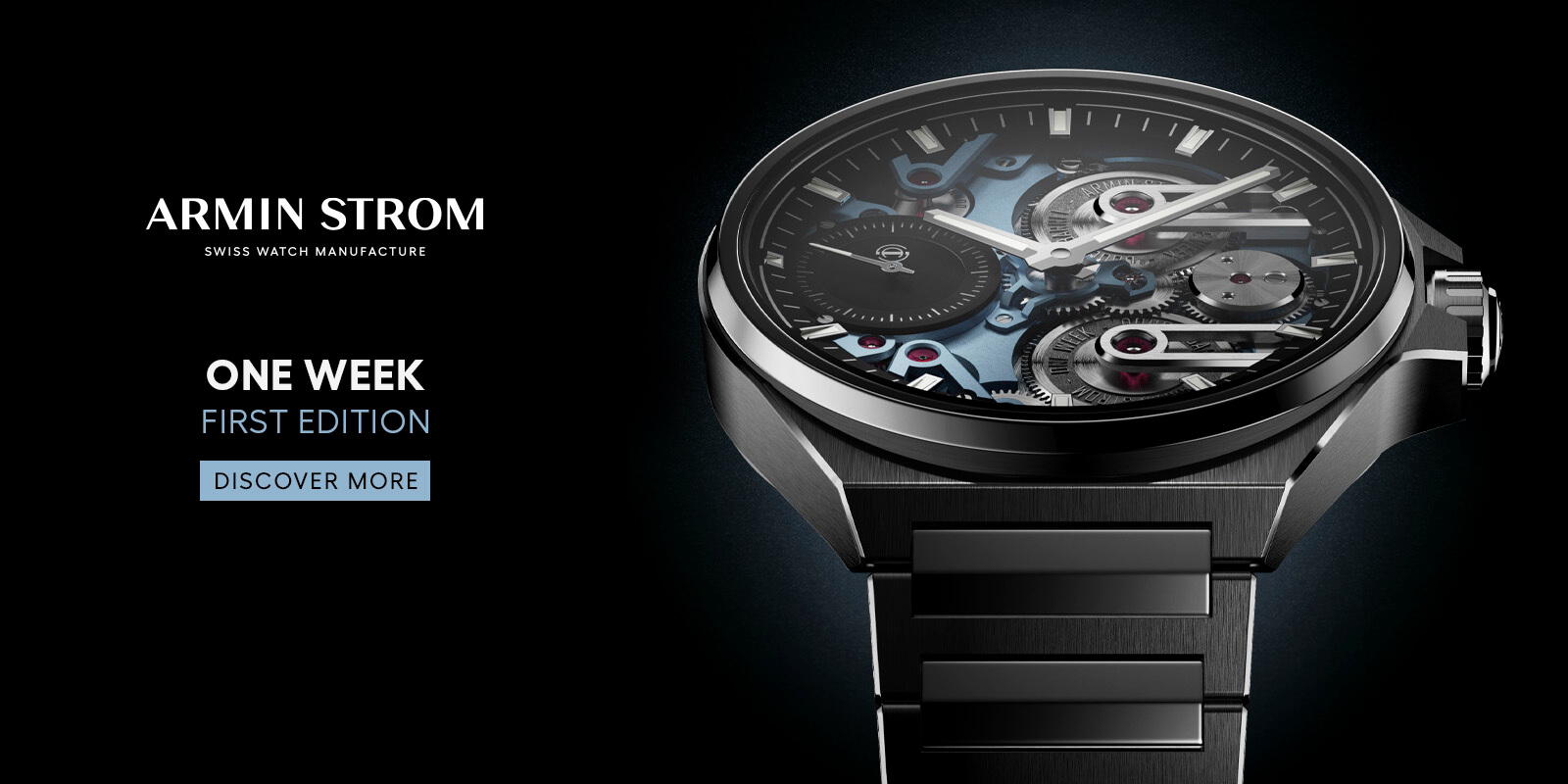


Leave a Reply
Want to join the discussion?Feel free to contribute!